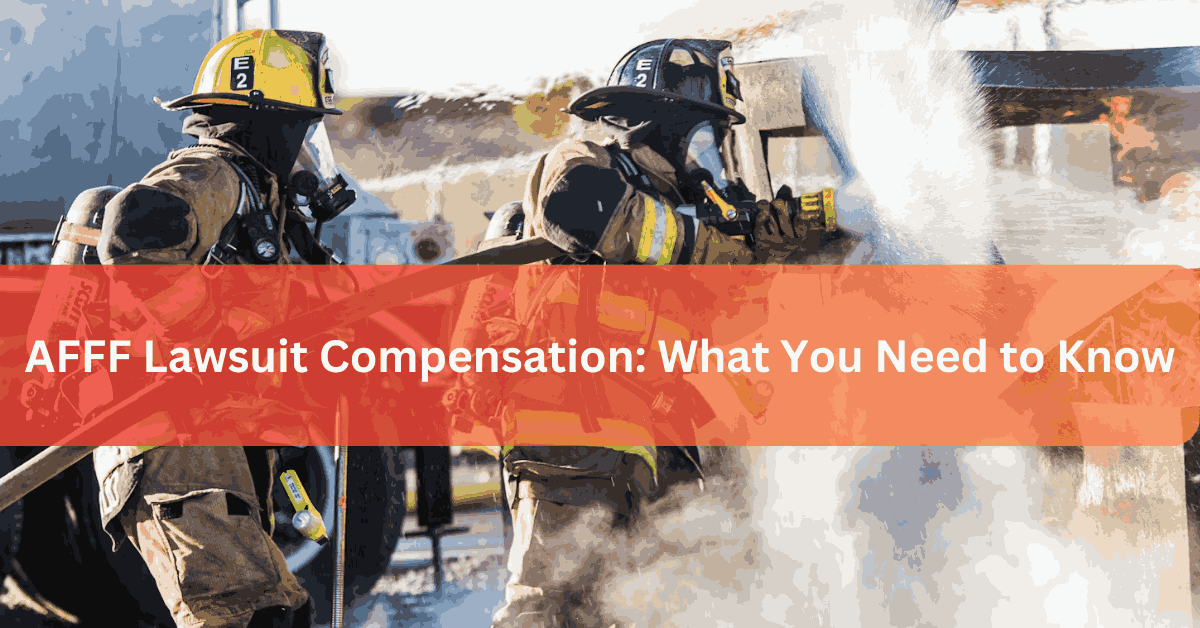AFFF Lawsuit Compensation: What You Need to Know
Aqueous film-forming foam (AFFF) has been widely used for decades as an effective flame-suppressing agent by military and civilian firefighters. However, these firefighting foams contain toxic chemicals known as per- and polyfluoroalkyl substances (PFAS).
Research over the past two decades has linked exposure to AFFF with a range of serious health conditions, including kidney cancer, thyroid problems, and elevated cholesterol.
As evidence mounts, people who developed health issues due to PFAS exposure are seeking AFFF lawsuit settlement amounts through lawsuits against the foam manufacturers.
What is AFFF, and Why Was it Developed?
AFFF contains PFAS chemicals that allow it to spread across hydrocarbon fuel sources. Then it separates the fuel from the air, smothering the flames. The film-forming foam poses intense friction and heat resistance, making it highly effective at putting out jet fuel and other flammable liquid fires.
The U.S. military developed AFFF during the 1960s to rapidly extinguish fuel fires. Later, civilian firefighters also broadly adopted it.
At the time, manufacturers and military officials hailed AFFF as an innovative life-saving product despite insufficient toxicology testing on the chemical compounds used.
Widespread AFFF Contamination and Associated Health Risks
PFAS compounds present in the AFFF foam resist heat, oil, stains, and water. These are useful properties for firefighting foam but render PFAS non-degradable in the environment and human body.
Soil, groundwater, and drinking water sources across hundreds of sites in the U.S. have tested positive for PFAS contamination, especially near current or former military bases where AFFF was routinely used.
Using information from the National Health and Nutrition Examination Survey (NHANES), the Centers for Disease Control and Prevention conducted a study that found PFAS in the blood of 97% of Americans.
According to TruLaw, higher rates of certain cancers, liver damage, fertility issues, and autoimmune disorders exist among exposed groups like firefighters and members of the military.
Legal Efforts by Victims to Obtain Compensation
Those living off-base near PFAS contamination sites face elevated health risks from prolonged low-level exposure.
Legal experts contend that manufacturers misrepresented health hazards while marketing AFFF, despite clear scientific warnings about PFAS toxicity.
Recently, chemical producers have begun to settle some claims, establishing multimillion-dollar injury funds while admitting no wrongdoing. Several settlements with companies accused of PFAS environmental contamination are listed below:
● The State of Minnesota ordered 3M to pay $850 million for PFAS-related environmental contamination.
● A $4 billion settlement was reached between DuPont, Chemours, and Corteva in response to several lawsuits alleging PFAS contamination.
● A $671 million compromise was reached between DuPont and the neighboring West Virginia facility regarding PFAS contamination.
Recent legislation also guarantees federal health care for veterans who can document AFFF exposure. Looking ahead, more settlements and court verdicts providing compensation for medical costs, lost wages, and pain seem imminent as ongoing lawsuits proceed through the justice system.
Determining Eligibility to File an AFFF Lawsuit
If you have been diagnosed with medical conditions scientifically linked to PFAS exposure, then you may be eligible to pursue legal action. You can be one of the current and former firefighters, members of the military, or civilians living or working at sites contaminated by AFFF usage.
You, as a plaintiff, will need to prove AFFF exposure through documentation, testimony, or medical records. Moreover, you will need to provide evidence linking the exposure to the development of the specific illness. This proof could include medical expert statements, relevant research studies, or physician opinions.
Finding a Qualified AFFF Litigation Attorney
The first step in your legal journey is identifying an attorney with experience litigating against chemical manufacturers over toxic exposures and related injuries.
Key credentials include:
● Experience handling PFAS cases
● Sufficient legal resources to undertake a complex lawsuit
● Expertise in strict product liability laws
● A track record of securing favorable settlements for clients.
You can find top AFFF litigation firms through legal directories, attorney rating services, or recommendations from firefighter veteran organizations. Initial consultations are often free, allowing prospective plaintiffs to assess their abilities.
Building a Strong Case for Compensation
In addition to proving AFFF exposure and related health damages, attorneys develop evidence claiming that manufacturers were aware of PFAS toxicity yet continued marketing foam for decades without warnings.
Relevant documents include internal memos, studies concealed from regulators, and misleading advertising materials, to name a few.
Similarly, plaintiffs must provide medical records indicating precise diagnosis dates, treatments undergone, and prognosis related to the AFFF-linked condition while documenting costs incurred.
Ongoing hardship from lost income, disabilities, or reduced quality of life may also affect your lawsuit demands.
Financial Recovery in AFFF Lawsuits
Successful litigation can recover damages covering current and future medical expenses, loss of wages, decreased earning capacity, and costs of medical monitoring and testing, based on the extent of losses resulting from AFFF contamination.
Additionally, victims can demand multi-million-dollar settlements to compensate for physical pain, mental suffering, and loss of companionship for family members. While monetary compensation cannot undo the damage, it seeks to make victims whole.
As the health impacts of AFFF contamination continue to emerge, raising awareness and providing resources to those affected remain critical. You can sensitize your community about trends like Eye Movement Desensitization and Reprocessing (EMDR) programs.
While assisting trauma survivors in processing their experiences and developing coping mechanisms, Eye Movement Desensitization and Reprocessing (EMDR) is among the most promising therapeutic approaches.
Several states now restrict PFAS in foams for firefighter training to prevent further pollution. While the damage done cannot be undone, important strides toward justice for victims advance through major settlements, new laws, and ongoing litigation.

